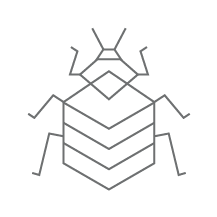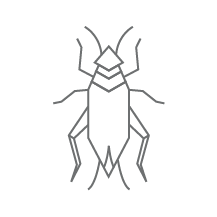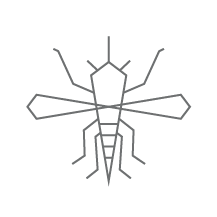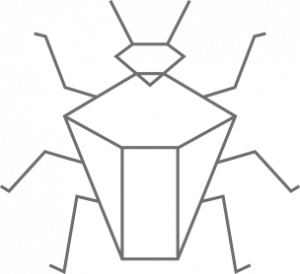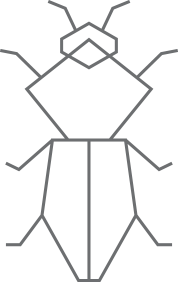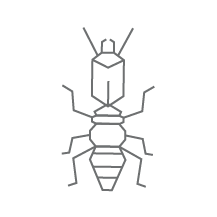
Commercial and Residential Pest Control Services | Dodson Bros. Exterminating Co., Inc.
Common Pigeon

Pigeons are opportunistic feeders, preferring grain for food. People often unwittingly feed pigeons by spilling food or leaving trash containers open. Pigeons roost in areas above ground and will readily nest in steeples, as well as voids on outside areas of buildings and other protected areas.
Pigeons may carry diseases such as cryptococcosis, toxoplasmosis, salmonella, various contaminants that can cause food poisoning and more. Their droppings may harbor the growth of fungus, which causes histoplasmosis. Their droppings are known for triggering human slips and falls, as well as accelerating the aging of structures and statues. Pigeon droppings on benches, cars, and on other structures is an aesthetic problem as well. Other pests may live on these birds, including fleas, lice, mites and ticks.
To prevent pigeons, nesting areas must be made inaccessible. Fill in access to voids, slope resting areas and prevent landing. Scare tactics often only work for a short amount of time. Remove any open animal food or trash bins, as well as standing water.
European Starling

Starlings will readily feed on seeds and anything else, but prefer invertebrate animals such as insects in their larval stages (grubs) in the spring and summer months. They will forage in open trash containers and eat spilled food in parks and picnic sites. Starlings will also roost in trees and consume fruit, making them an agricultural pest. Starlings are also known to travel in large flocks, sometimes with other black birds.
Starling droppings can cause steel components to degrade and cause structural damage. A potential health risk arises from soil enriched with starling droppings, which can promote fungal growth and lead to diseases, such as histoplasmosis. Starlings are also known for bird strikes of aircraft, causing at least one recorded crash with fatalities. Additionally, Starlings can be quite loud which can be disturbing to some people, especially when in large groups.
To prevent starlings, seal any openings larger than one inch to prevent nesting. Trimming trees can reduce their attractiveness as roosting spots. Eliminate horizontal surfaces by adding obstructions such as professionally installed wire repellents. Keep animal food and trash sealed off from birds. Clear gutters to prevent water from pooling.
House Sparrow

House sparrows are noisy birds. They build nests in various openings, including shop signs and traffic lights. They are often found hanging around parking lots waiting for crumbs and picking insects off car grills. House sparrows can be extremely aggressive, and will harass, attack and kill adult native birds when competing for nest sites, and destroy their eggs and young.
House sparrows damage crops by pecking seeds, seedlings, buds, flowers, vegetables and maturing fruits. Sparrows are associated with transmitting more than 25 diseases of humans and animals, including St. Louis encephalitis. Damage can also be caused by the pecking of rigid foam insulation inside buildings. The bulky, flammable nests of house sparrows are a potential fire hazard. Additionally, house sparrows are very aggressive birds who will displace other wanted native songbirds in areas.
Close all openings that are larger than ¾ inch. Attach signs flat to buildings to prevent roosting sites.
